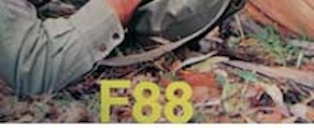
The L1A1 was the standard British Army assault rifle from the mid-1950's on through the late 1980's, ultimately being replaced by the bullpup-configured L85A1. The L1A1 stemmed from a British military need to arm it's troops with a new automatic weapon. Development of their own assault weapon was abandoned so it left the British military looking to fill a role with limited locally-produced possibilities.

Therefore the British Army looked outside the country for assistance and landed an agreement with the Belgium firearms firm of Fabrique-Nationale to license the highly successful FN FAL design. The L1A1 would appear very much like the original FN FAL (in both looks and operation), though the production process and measurements in imperial would change the nuances in design and engineering so much so that the two weapon system's parts were not interchangeable.
In the end, the British Army ended up with a solidly built and designed rifle that was quite capable of fielding to the frontlines for the next 30 years.
The L1A1 SLR (Self Loading Rifle) is the British version of the FN FAL (Fusil Automatique Leger) - Light Automatic Rifle, one of the most famous and widespread military rifle designs of the late 20th century. Developed by the Belgian Fabrique Nationale Company (FN), it was used by some 70 or more countries, and was manufactured in at least 10 countries. The FAL type rifle is no longer in front line service in the developed world, but is still in use in poorer parts of the world.

The history of the FAL began circa 1946, when FN began to develop a new assault rifle, chambered for German 7.92x33 mm kurz intermediate cartridge. In the late 1940s the Belgians joined with Britain and selected a British .280 (7x43 mm) intermediate cartridge for further development. In 1950 both the Belgian FAL prototype and the British EM-2 bullpup assault rifles were tested against other rifle designs by the US Army. The EM-2 performed well and the FAL prototype greatly impressed the Americans, but the idea of the intermediate cartridge was at that moment incomprehensible for them, and USA insisted on a full size cartridge, the 7.62 NATO, as a standard in 1953-1954. Despite the British Defence minister announcing the intention to adopt the EM-2 and the intermediate cartridge, Winston Churchill personally opposed the EM-2 and .280 cartridge in the belief that a split in NATO should be avoided, and that the US would adopt the FAL in 7.62 as the T48. The first 7.62 mm FALs were ready in 1953. Britain adopted the FAL in 1957 designating it the L1A1 SLR, and produced their own rifles at the RSAF Enfield and BSA factories.
Canada also used the FN, designated the FNC1 and FNC1A1, and like Britain/Australia/New Zealand/India, retained the semi-automatic-only rifle well after other armies turned to full automatic assault rifles such as the M16 and AK47.
Taking the 7.62 SLR out of service was not logical. The reason given was to 'standardise' ammunition. In the 30 years since its demise (a perfect military weapon) British ammunition has not been standardised. A number of foreign governments to whom the SLR was sold off, still, in 2008, retain the weapon as their main infantry rifle.





